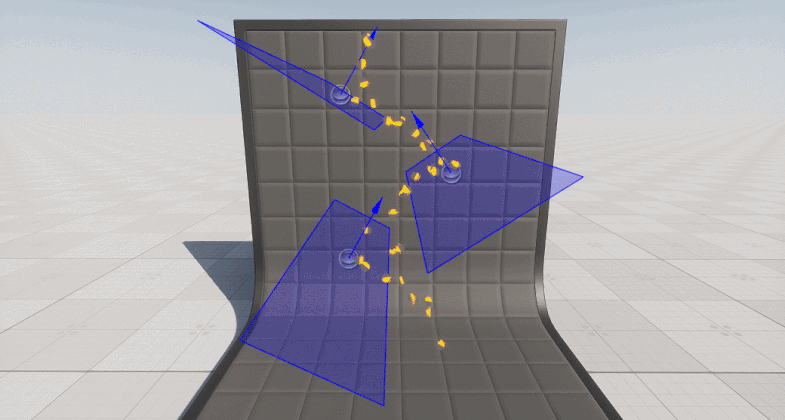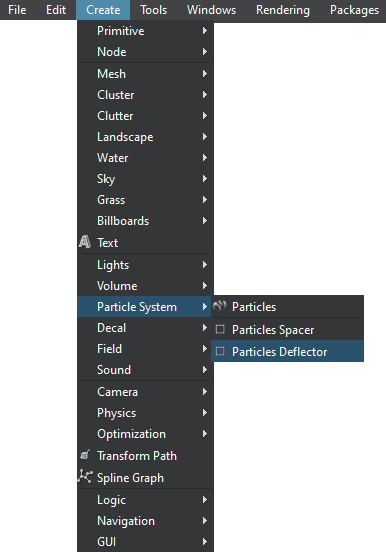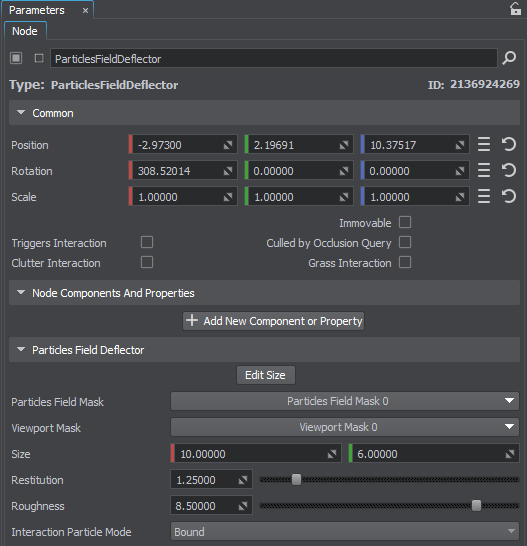Particles Deflector
Particles Deflector is a surface field that has no visual representation, but physically interacts with Particle Systems (other objects are not affected) blocking the way for particles and making them bounce off the deflector's surface. Depending on the specified size, it can be either rectangular or square, plus it can be arbitrarily positioned or rotated to cover the necessary area.
Deflectors are one-sided, meaning the particles can only interact with one side (e.g., when falling on a deflector from above, while freely passing through them from the opposite side).

See also#
- The ParticlesFieldDeflector class to manage Particles Deflectors via API
Adding Particles Deflector#
To add a Particles Deflector to the world via UnigineEditor, do the following:
-
In the Main Menu, choose Create -> Particle System -> Particles Deflector.

-
Place the Particles Deflector in the world to cover the area where particles are to be cut out:
NoticeMake sure that the Spacer interaction flag is set for materials applied to grass or water.
Editing Particles Deflector#
In the Particles Field Deflector section (Parameters window -> Node tab), the following parameters of the Particles Deflector can be adjusted:

Adjusting Deflector Form#
Setting Bit Masks#
The bit masks listed below enable you to fine tune interactions and functionality of a Particles Field to achieve the desired effect and optimize performance.
| Particles Field Mask | Bit mask enabling you to control interactions of the Particles Deflector with particles. The Deflector will affect particles generated by a Particle System only if they both have matching masks. |
|---|---|
| Viewport Mask | A Viewport mask. A bit mask for rendering the Particles Deflector in the current viewport. For the Particles Deflector to be rendered into the viewport, its mask should match the camera Viewport mask (at least one bit). This can be used to selectively disable Deflector functionality for a certain camera view without disabling the Deflector itself (e.g. it is not necessary to cut out rain or snow inside a car, when the car is viewed from above). |
The information on this page is valid for UNIGINE 2.19 SDK.